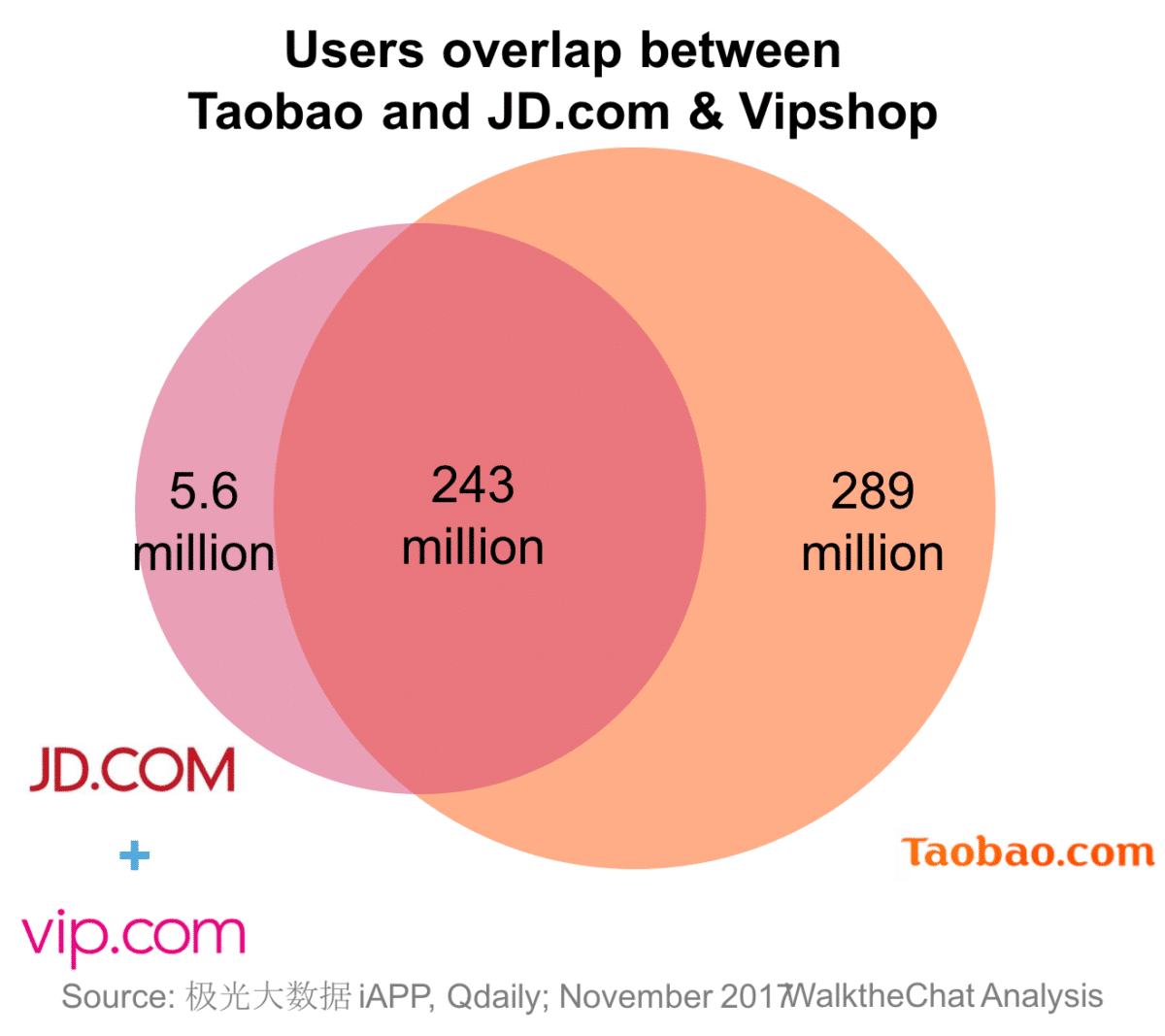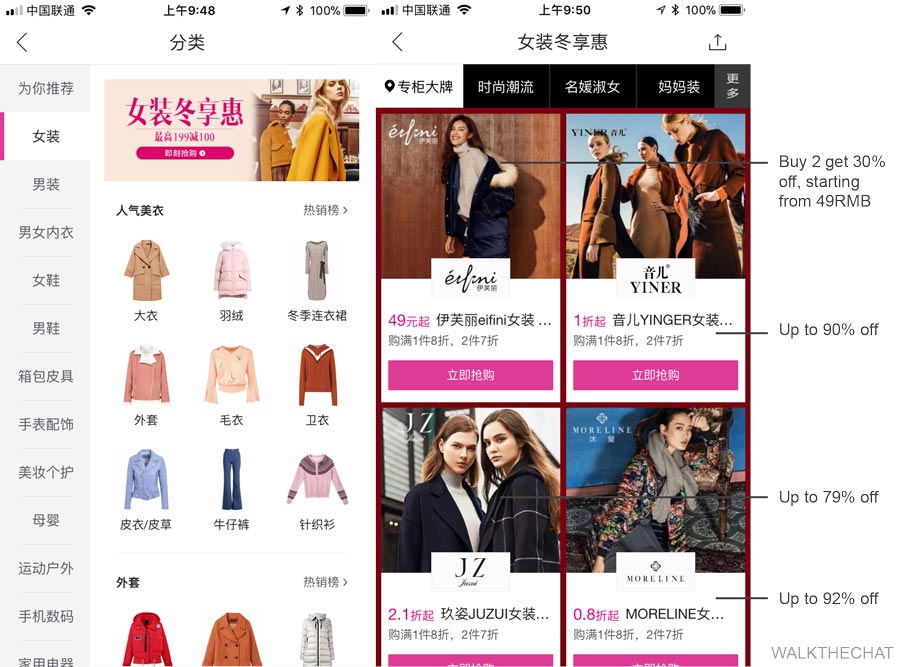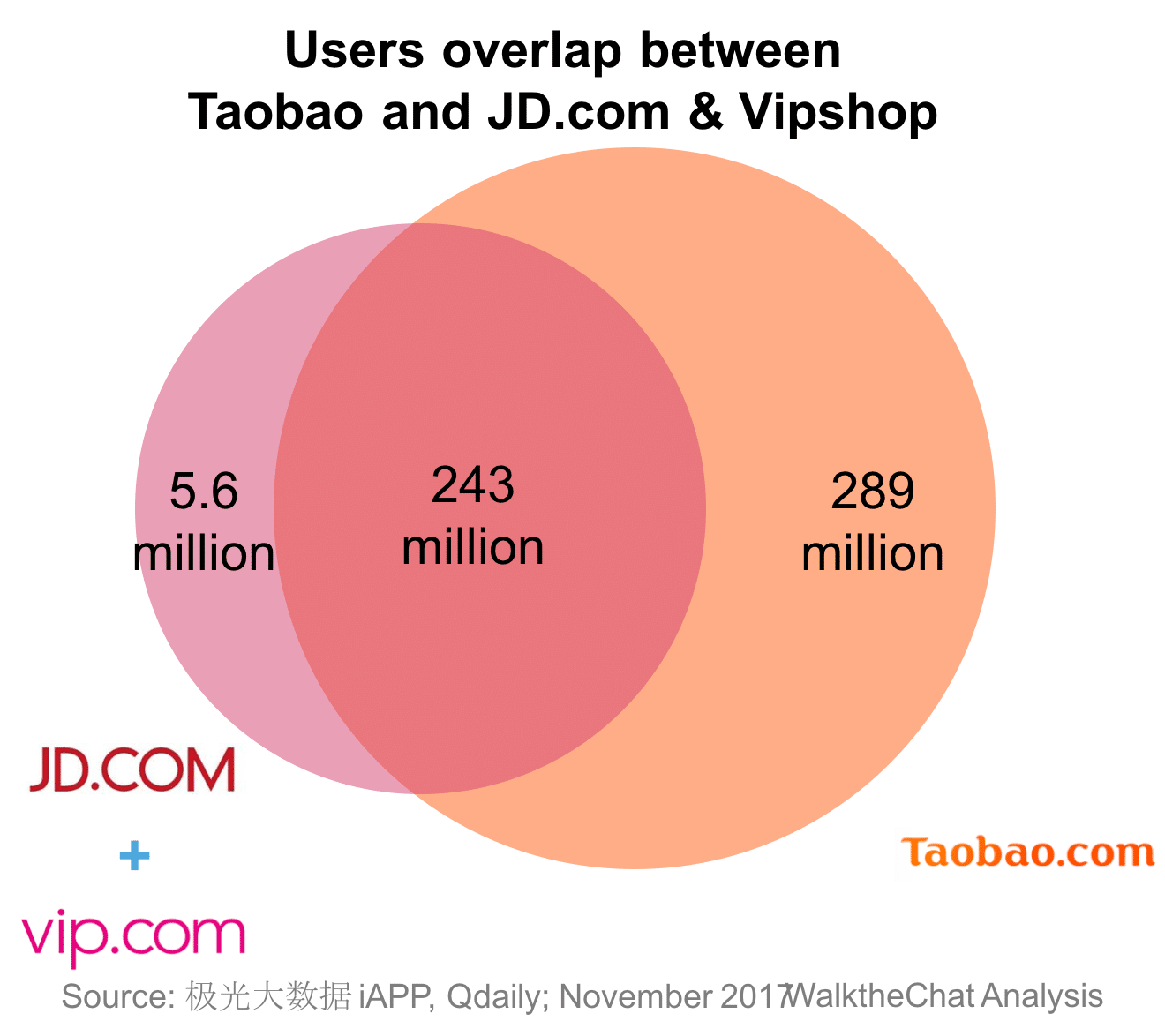December 18th, Tencent and JD respectively spent $604M and $259M USD to invest in Vipshop, the 3rd largest e-commerce store in China. After the investment, Tencent and JD own 7% and 5.5% of Vipshop. Tencent becomes the second largest shareholder of Vipshop. The investment pricing was 55% percent above the share price of the previous day.
Let’s look deeper into this bold move from Tencent and JD.
What is Vipshop?
Vipshop is the 3rd largest e-commerce platform in China, specializing in selling branded products at a discount price.
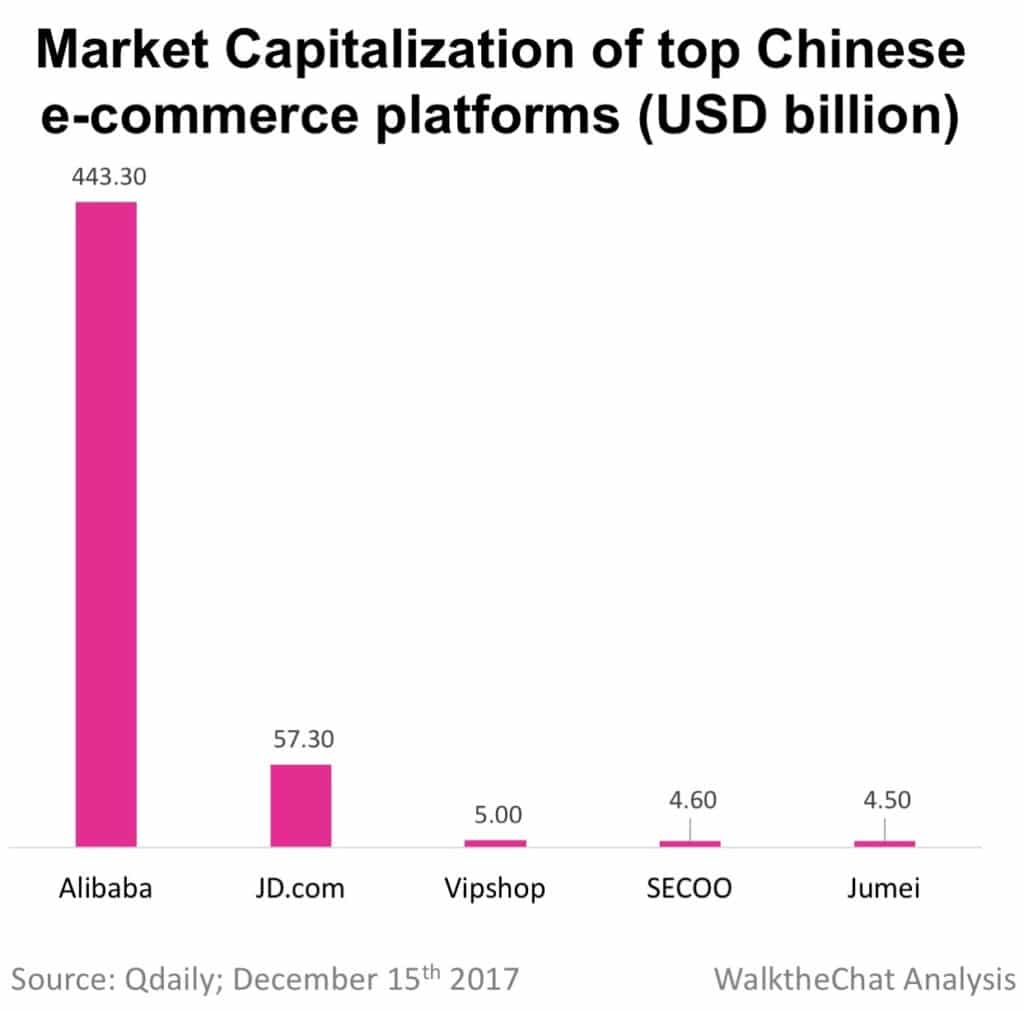
Clothing and shoes are the biggest categories on the platform. Most of the brands are local Chinese brands, promoting at heavy discounts. Below is an example of the homepage of Vipshop: some brands are even promoting at 92% discount.
Product category
Clothes, shoes, bags, and cosmetics make up for 65% of Vipshop’s annual revenue in 2016.
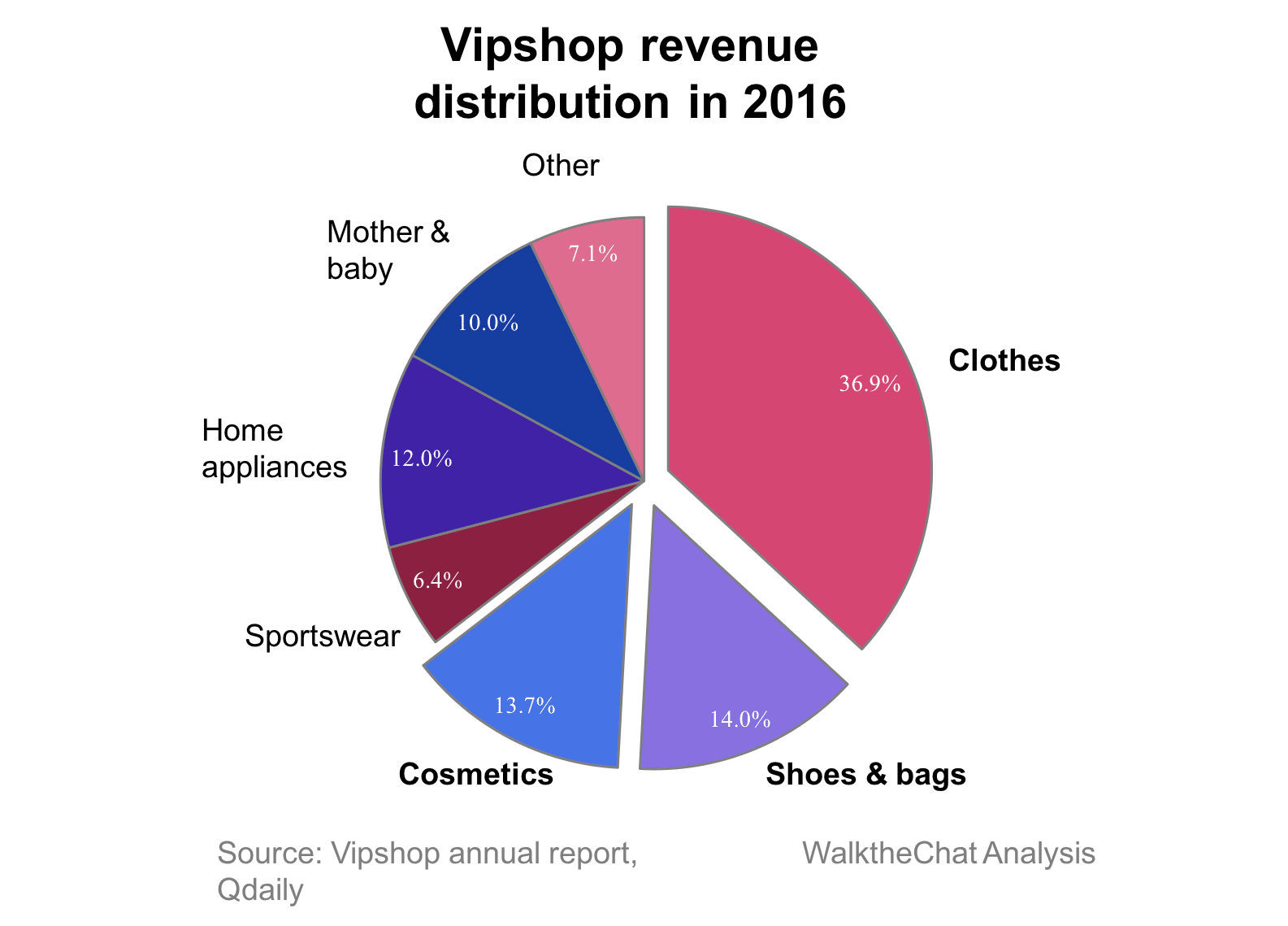
Vipshop’s strength in clothing is a good complement to JD.com. JD has been known for its strength in electronics, however, it falls behind Taobao/Tmall in every other category.
From a branding perspective, the top-selling Vipshop clothing merchants are local Chinese brands such as Handuyishe 韩都衣舍 or Yipintiancheng 衣品天成. These are brands that you are most likely to see in 2nd and 3rd cities’ shopping mall.
Taobao’s top-selling clothing store, on the other hand, is focused on selling knockoffs of celebrities’ clothes. Taobao stores have a much heavier focus on the product itself.
User demographics
Vipshop claimed that 80% of its 300 million registered users are female.
Below is data collected by an independent 3rd party called iApp 极光大数据 in November 2017. The female users make up for 68.9% of Vipshop user base. For JD.com, it’s just the opposite: 61% of users are male.
Once again, we see a strong complementarity. A combined JD.com+Vipshop platform would have a much wider reach.
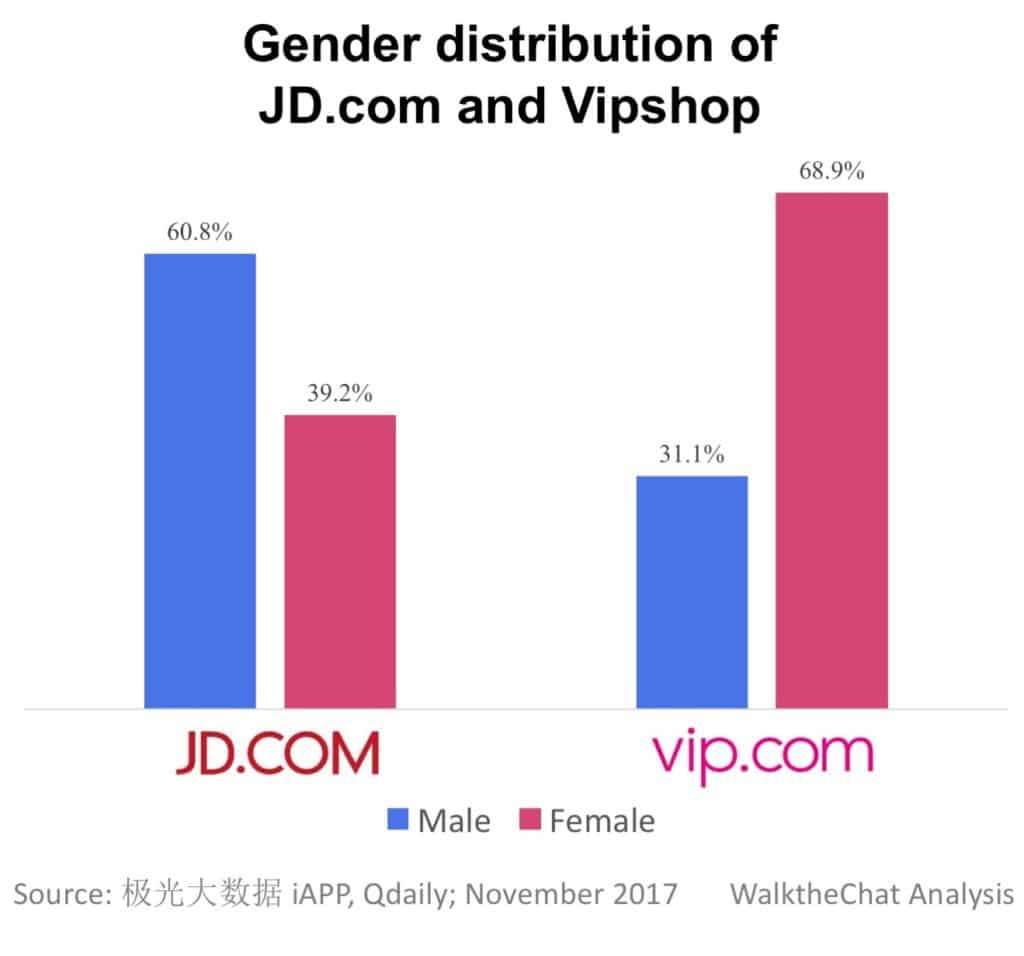
The two companies are also complementary in terms of users’ location. JD.com has over 57% of its users located in tier 1 and tier 2 cities. Vipshop, on the other hand, has 53% of users located in the third tier and below cities.
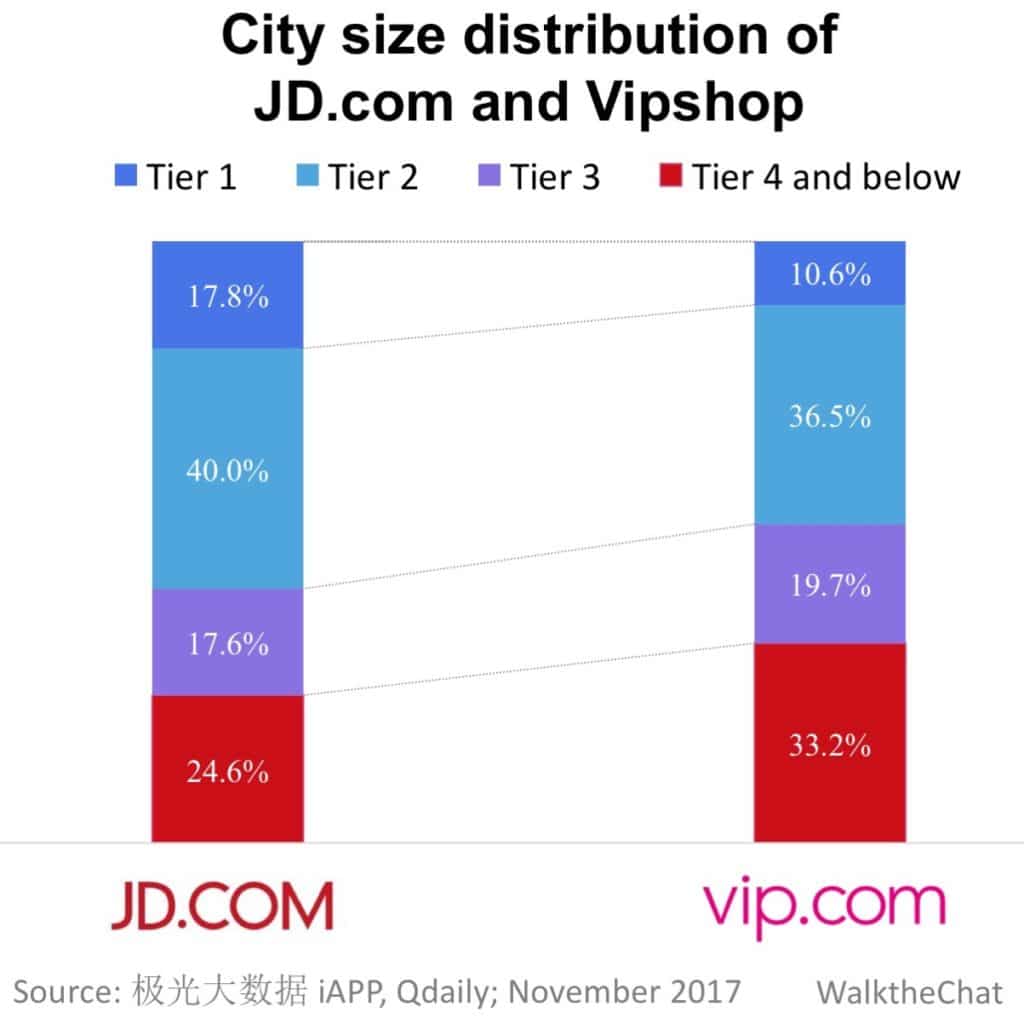
Vipshop and JD.com, however, have very similar user age groups: over 50% of both company’s users between 20 and 29.
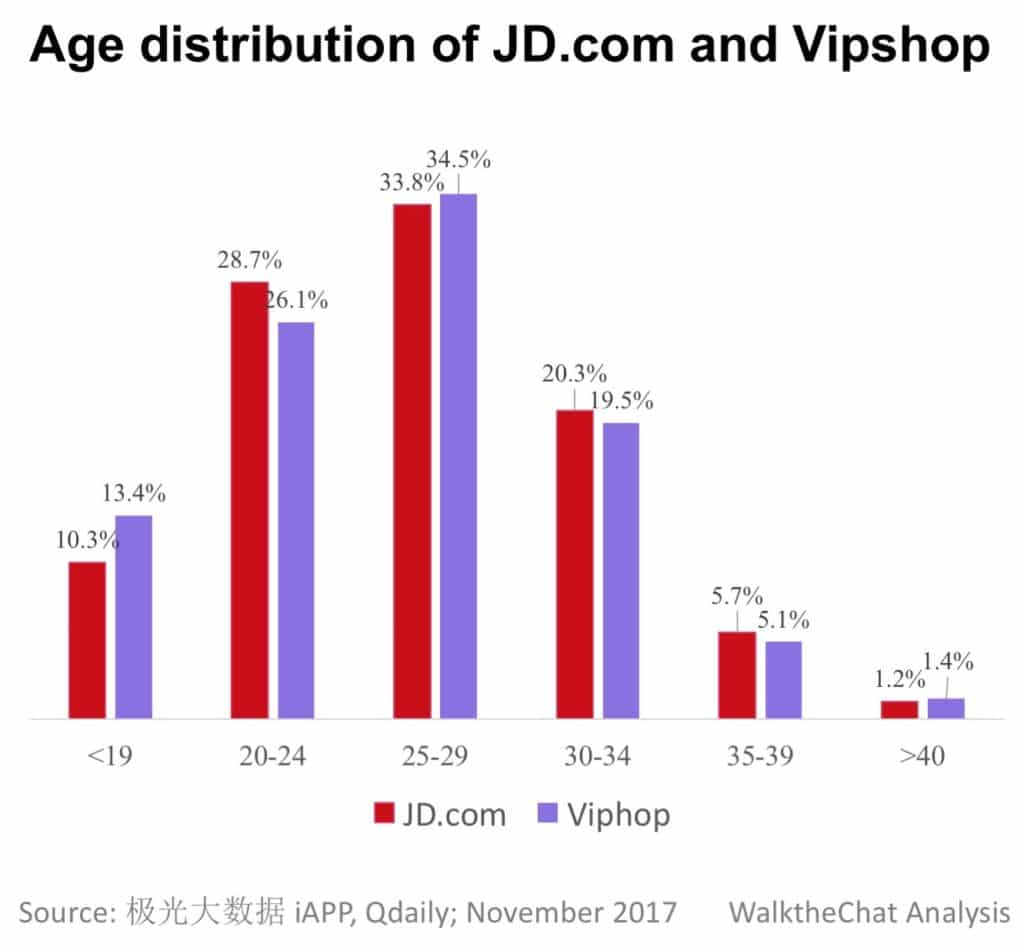
Cost synergy
The biggest expense for Vipshop is logistics. It spent 1.7 billion RMB in building logistics centers in the last quarter. 95% of its orders are shipping via the company’s own logistics company. Since its users are located in smaller cities, it has a good distribution infrastructure setup in those smaller villages.
On the other hand, also JD also runs its own delivery business, and keeping the same delivery experience for lower cities as it does for tier 1 or tier 2 cities has been a challenge. The marriage of the two companies logistic network could largely benefit both parties.
Tencent & Vipshop
It’s clear having Tencent as investor comes with many benefits. The biggest advantage is WeChat could be a huge source of traffic. It’s possible WeChat could give Vipshop a tab in the Wallet page, which could bring huge traffic to Vipshop.
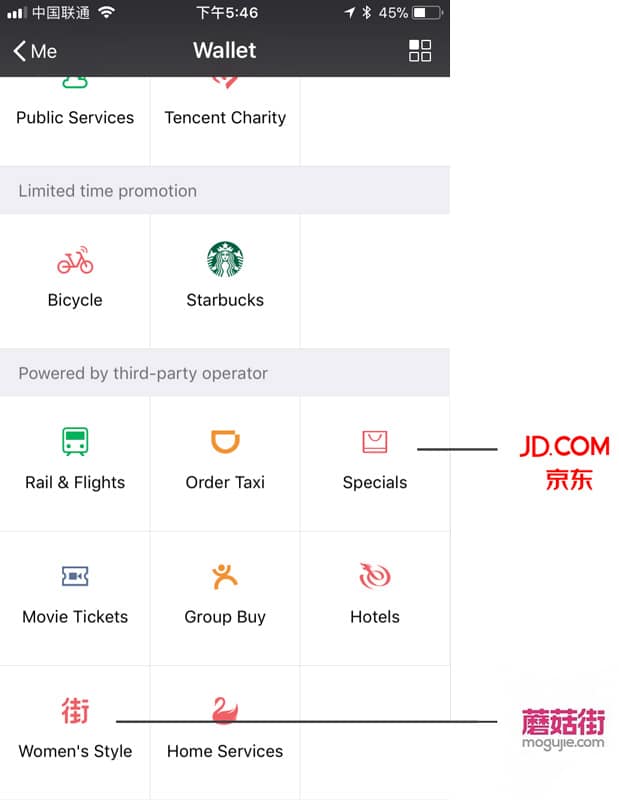
Even if Vipshop doesn’t make this list, at least users will be able to access its website on WeChat. On the other hands, companies associated with Alibaba tend to be blocked on WeChat, such as Taobao, Tmall, Xiami music and etc.
For Tencent, acquiring part of Vipshop seems like an obvious choice in its battle against Alibaba.
But the Alibaba giant remains ahead: even combining JD.com and Vipshop’s Monthly Active Users (MAU), the two platforms still only sum up to 1/3 of Taobao’s numbers.
Below is the graph showing MAU’s as monitored by iAPP. Taobao is clearly the number 1 e-commerce platform.
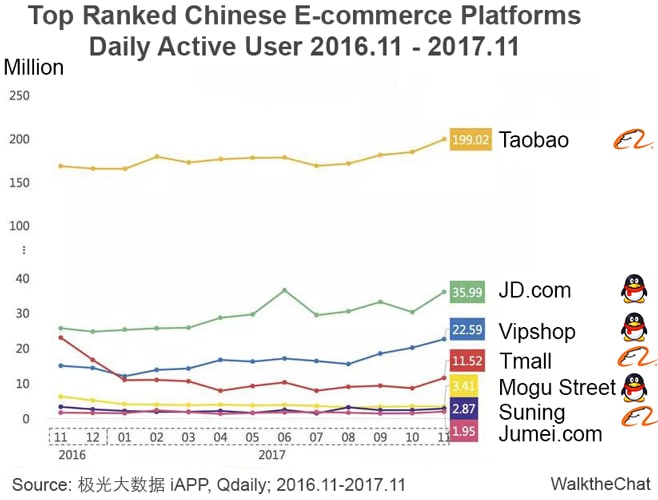
Notice the top 6 e-commerce platforms have chosen their side between Alibaba and Tencent. All the top platforms are either owned or partially owned by the two tech giants.
Having Vipshop on team Tencent/JD.com brings more balances to the e-commerce battle. Although users are by no means exclusive to either ecosystem. 243 million users are shopping on platforms from both parties.
Conclusion
The investment in Vipshop brings a lot of complementary assets to JD and Tencent in terms of gender reach, geographical reach, and logistics. As such, it’s a strong and smart move against Alibaba.
Tencent is however still fighting an uphill battle against Alibaba, which still mostly controls Chinese e-commerce. Of course, Tencent has a powerful weapon to bring to the fight: WeChat. It remains unclear whether the number 1 social App in China will be enough to tear down Alibaba.

